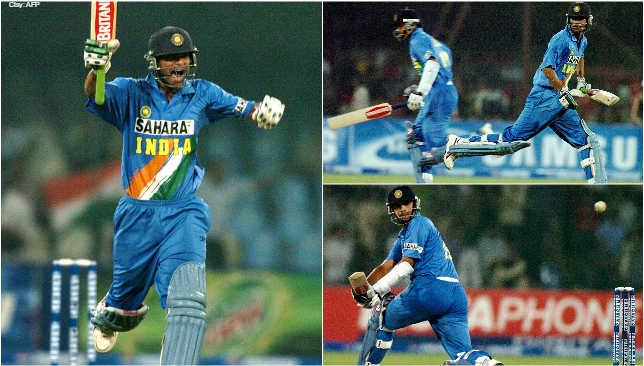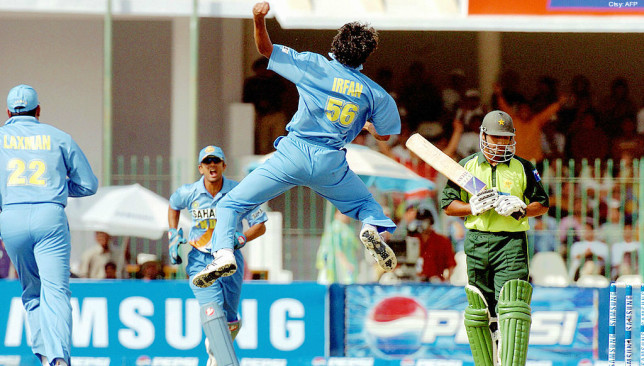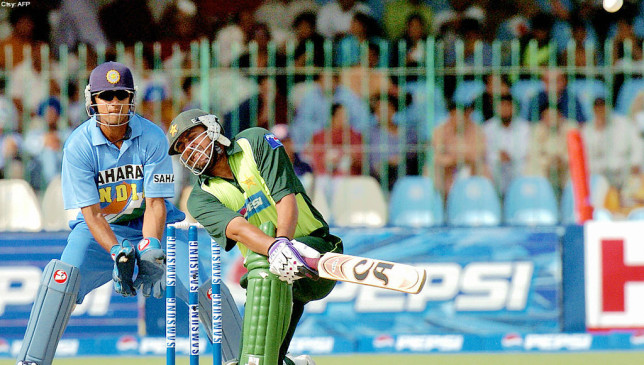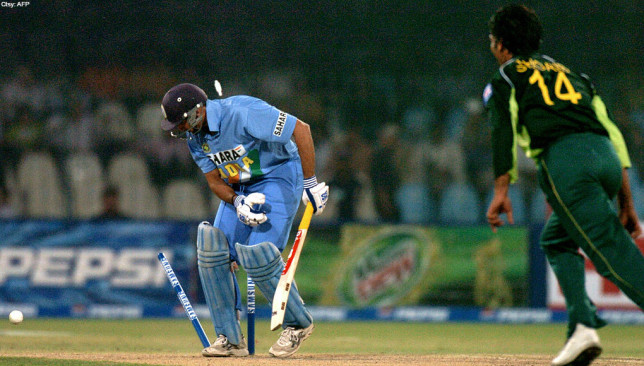
India’s tour of Pakistan in early 2004 represented a changing of the guard in some respects. Victory in the three-Test series came by a 1-2 margin, and it was their first Test series win abroad since a 0-1 verdict in Sri Lanka in 1993. Prior to that, the two neighbours played in a five-match ODI series that was also claimed by India, this time by a 2-3 margin.
It was an exciting time to be an Indian cricket fan. With the bad vibes of the 1990s and the dark cloud of the match-fixing scandal laid to rest, a sense of optimism about the team and its performances had sprung up. The side was a perfect blend of new blood and old heads, a productive harmony between youth and experience, between style and steel. They had come agonisingly close to major victories, but this well-oiled machine could never quite get that big win. The shot of confidence that would prove this team was as good as they said it was, and not just a lot of hot air.
After defeat in the 2003 World Cup final and taking Australia to the wire in 2003-04, the wins in Pakistan seemed to be that confirmation. Arguably the most dramatic moment of the whole tour came on 21 March 2004 – the fourth ODI at Lahore. With India staring down the barrel after Pakistan amassed a huge total, two men – symbolic of the dual youth and experience that characterised the Indian side – decided enough was enough. Rahul Dravid and Mohammed Kaif were the steady hands that took India home by five wickets and levelled the series 2-2
Things go India’s way

Irfan Pathan celebrates after getting Yousuf Youhana
If there was ever a time for India to mount a comeback, this was it. In front of the largest contingent of Indian fans that had turned up in the series to that point, Pakistan won the toss and their captain Inzamam-ul-Haq elected to bat.
The game was played with ferocious intensity throughout. Aggressive, persistent, attritional – all these words can be used to describe how the two rivals went at it hammer and tongs. Of the two, India enjoyed the better of the opening exchanges. Although their bowling attack was fairly young and inexperienced, the Indians quickly had Pakistan on the back foot.
The home side only managed 59 runs in their first 15 overs. Irfan Pathan, bowling full, straight and aggressive, collected two wickets, removing Shahid Afridi and Yousuf Youhana. He finished with figures of 10-1-53-2.
India mixed it up well. Murali Kartik mostly stuck to a defensive line outside leg stump, proving the yang to Pathan’s yin. It got him the prize of Yasir Hameed’s wicket in the 21st over – stumped by Rahul Dravid for 45. Pakistan were still only 89-3 at that stage.
Pakistan strike back

Inzamam-ul-Haq top scored with 123
This is where Inzamam took over. He batted 160 minutes and 121 balls for a superb 123 – his tenth ODI hundred and his fourth against the old enemy. With support from Younis Khan, Inzamam kept his within striking distance of a good total. Pakistan were 206-4 in 42 overs.
But with the Indian bowling, naturally, running of out steam after relentlessly keeping up the pace all game, Pakistan saw their chance. Abdul Razzaq, who scored 32 runs in 24 balls, joined the party as Inzamam reached his century and Pakistan posted an imposing total of 293 from their 50 overs. The last 8 overs had gone for 87 runs.
The Indian response

VVS Laxman was bowled off a Shoaib Akhtar scorcher
The Pakistan bowlers came flying out of the traps, hoping to knock Indian wickets over by sheer brute force and weight of aggression. They were like a car on the highest gear, roaring ahead as fast as their bodies could push them, but also rattling like crazy as a consequence of staying in top gear so long.
It was exhilarating cricket played at absolutely breakneck pace. Shoaib Akhtar and Mohammed Sami collected four wickets between them, dismissing Virender Sehwag, Sachin Tendulkar, VVS Laxman and Sourav Ganguly. At 95 miles an hour, Akhtar was throwing everything at the batsmen, who responded in kind. The Indians fought fire with fire – although wickets were falling regularly and none of the top four could stick around, India registered 103 runs from the first 15 overs.
There was hardly any time to breathe. Yuvraj Singh had established a modicum of Indian control over the game with Rahul Dravid – a partnership of 68 runs in 64 balls with 10 fours – but his dismissal for 36, literally in the hands of Yousuf Youhana, closed an astonishing 24 overs.
It was half a game full of terrifying bowling, snappy batting, inside edges and extras (Pakistan conceded 37 in total) at the end of which India were 165-5. The required run rate was already down to only five runs per over, but Dravid and Kaif constituted the last recognised batting pair. A calm pair of hands were needed, for this blood-and-fury approach was unsustainable.
That is exactly what happened. Dravid had rescued many causes in this new role of batting at number five, and this was another one. He found steady support in Kaif, who had himself rescued two iconic matches a couple of years previously, most famously the 2002 NatWest final. What set this partnership of 132 runs in 130 balls apart is its amazing sense of calm.
Dravid and Kaif never looked hurried or under too much pressure. On the contrary, they were cruising, taking India home by five wickets with a comfortable 30 balls to spare. Dravid scored 76 off 92 balls with nine fours, while Kaif put up 71 runs of 77 balls with eight fours. Pakistan’s errant fielding and loose bowling helped them somewhat, but the duo’s success lay in their approach.
With deflections, pushes, prods and some quick running between the wickets, Dravid and Kaif took the sting out of the game and gradually, bit by bit, established their control over the innings. It was a cool sense of inevitability to their batting that took them past Pakistan’s score with a minimum of fuss.
All on the field
Both captains were absolutely exhausted when interviewed after the game. Some talk of the match being fixed was raised not only to both Dravid and Inzamam but also by Rashid Latif on television. It was dismissed quickly, and the terrific game was rightly the focus of discussion instead.
Both sides were spent at the end of the encounter, having left it all out on the field. It had been an exhausting ordeal for both players and spectators, but it had also been a tremendous sporting contest that increased the anticipation for the Samsung Cup decider three days later, as well as the upcoming Test series.
Epilogue
The fifth and final ODI was played on 24 March 2004 – also in the city of Lahore. India, batting first, reprised Pakistan’s total of 293 from the previous game. Dravid failed with the bat this time, but VVS Laxman was on hand to score a 104-ball 107. Inzamam could not repeat his heroics from three days ago, but Shoaib Malik and Moin Khan both contributed scores of fifty-plus.
It wasn’t enough, however, for Lakshmipathy Balaji and Irfan Pathan took three wickets apiece in the second innings to deliver India’s victory by 40 runs.
[interaction id=”574dc48ece3a0a623b47056f”]